The night spent near the Tjäktja huts was above all, rainy and windy. That contributed to the fact that we did not have a good night sleep and were tired even before our day started.
Still, eager to get going, we walked back over the bridge that got us to the tent place and waved our goodbyes to Tjäktja.
Just after the bridge we turned right, towards Sälka and the south. There was another option, a detour, continuing straight ahead after the bridge, on a path leading to the Nallo huts. Due to the heavy rain, we were warned that the very stony parts of this path could be extremely slippery, so this option and the fact that we did not wanted to miss out on Tjäktjapass, fell out.

Just outside the emergency hut. The climb up was very steep.
After a couple of kilometres walking on a ground that resembled the surface of the moon, stony with very little vegetation, we spotted the emergency shelter. It is a small hut in wich one can rest for a while and it is open all year around. Staying there for the night is not allowed, off course if it is not an emergency. We stopped by and made ourselves some tea and ate snacks.
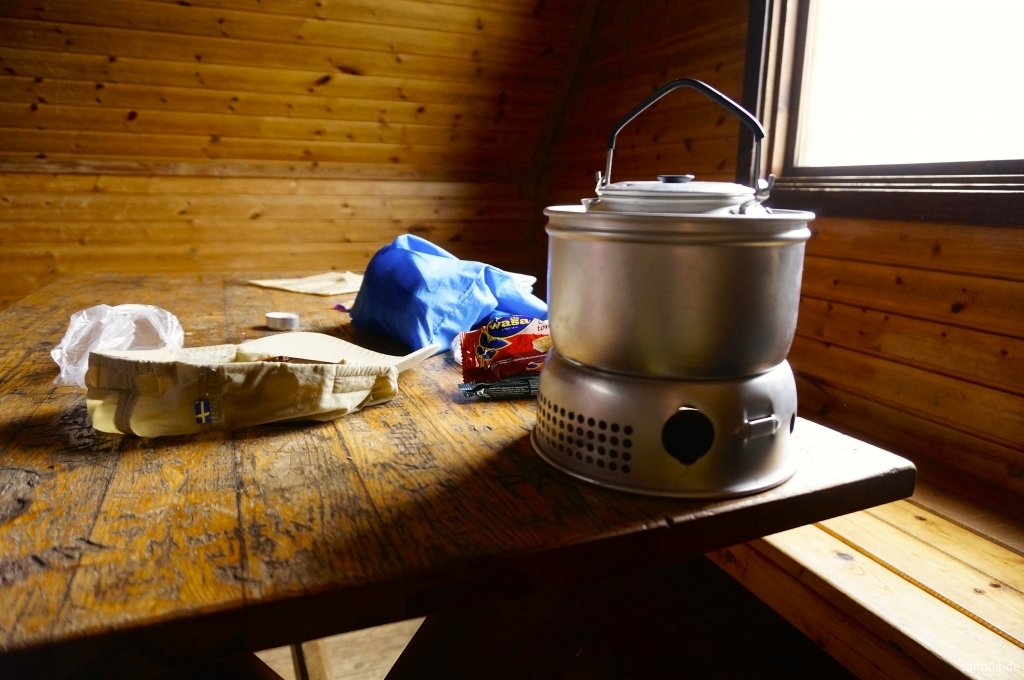
Break time and cooking some tea i the hut.
The hut is situated on a hill, Tjäktjapass, and the climb up was not extremely hard, tough in the rainy weather a bit tricky. On the other hillside, looking south from the hut, the environment was green and dreamy. We had now been on the highest point of Kungsleden, aprox. 1200 meters above sea level. It was now time for the very steep and rocky climb down (ca 300m) and we had our boots tied a bit tighter to avoid blisters on our way down.
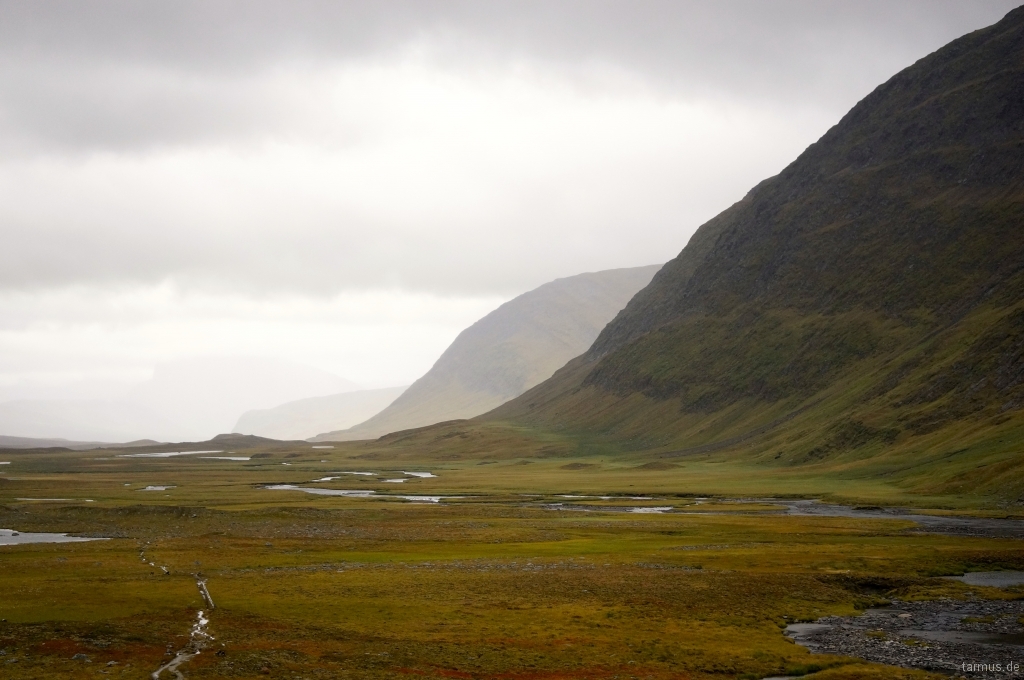
The valley Tjäktavagge on the other side of Tjäktjapass was impressive.
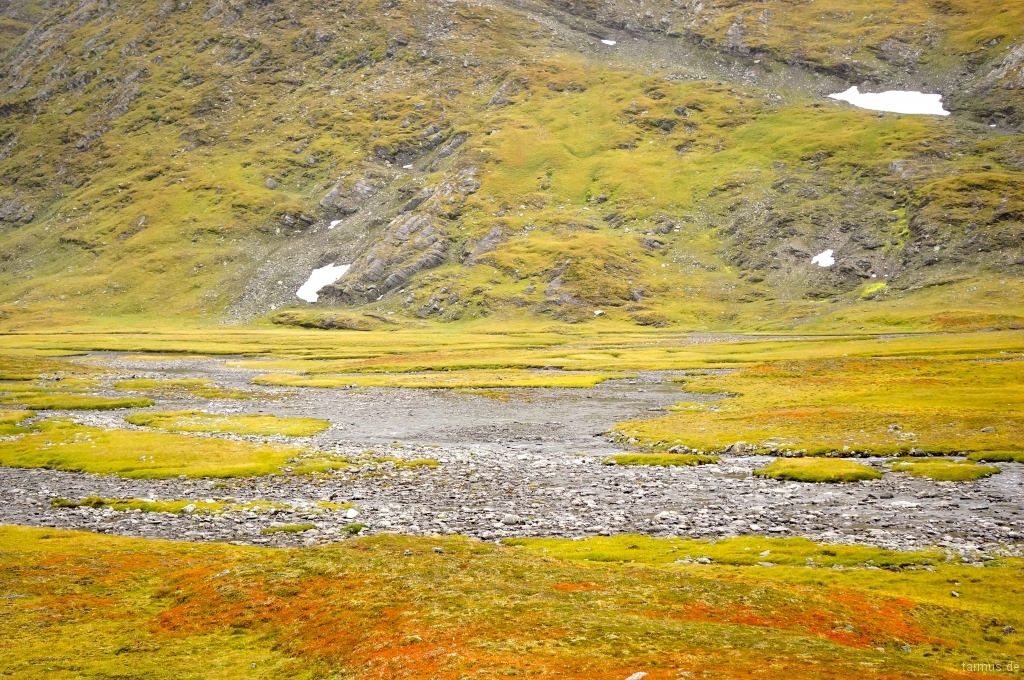
Still some snow visible along with autumn colours.
After the steep climb, the Tjäktjavagge is an easy, 6 km walk to the Sälka huts. There are a lot of wooden planks laid around to ease the walk. What the picture below does not show is that there were a lot of lemmings hiding under the planks, emerging from their holes in the underground. The Norway lemming is endemic for this region.
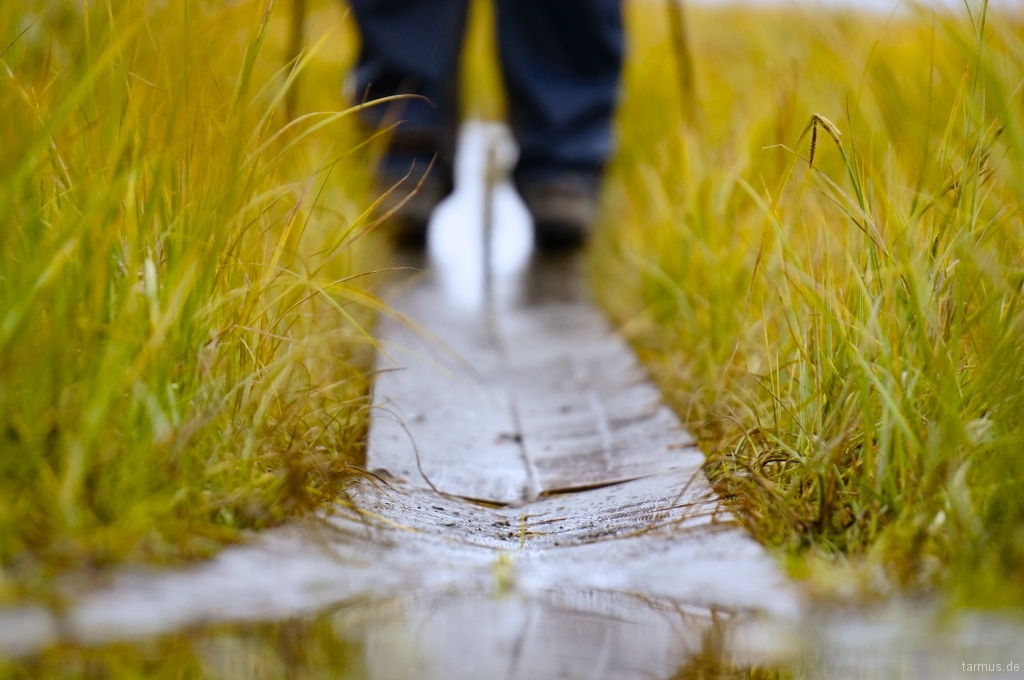
The planks laid out here and there really helped over difficult grounds. And one could enjoy the scenery better not worrying all the time where to put your feet next.
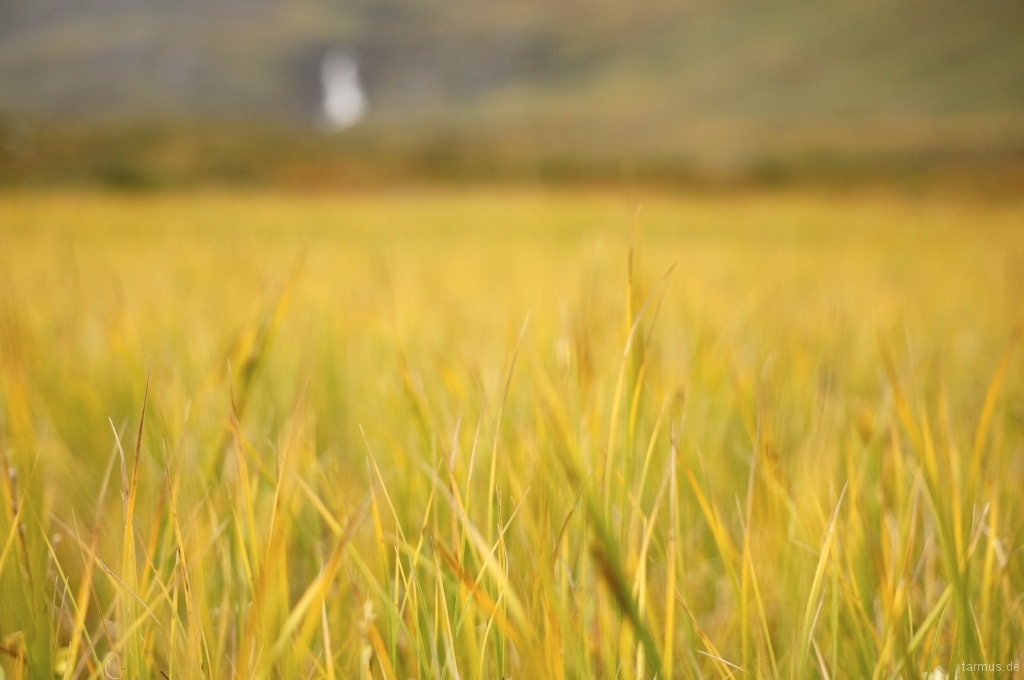
Wind playing with the grass.
The vegetation in Tjäktavagge was rich and we were amazed by the coloration. The silence had our thoughts wander away and even if we walked as a couple, in a pair, we had moments where there were no words exchanged for a long time.
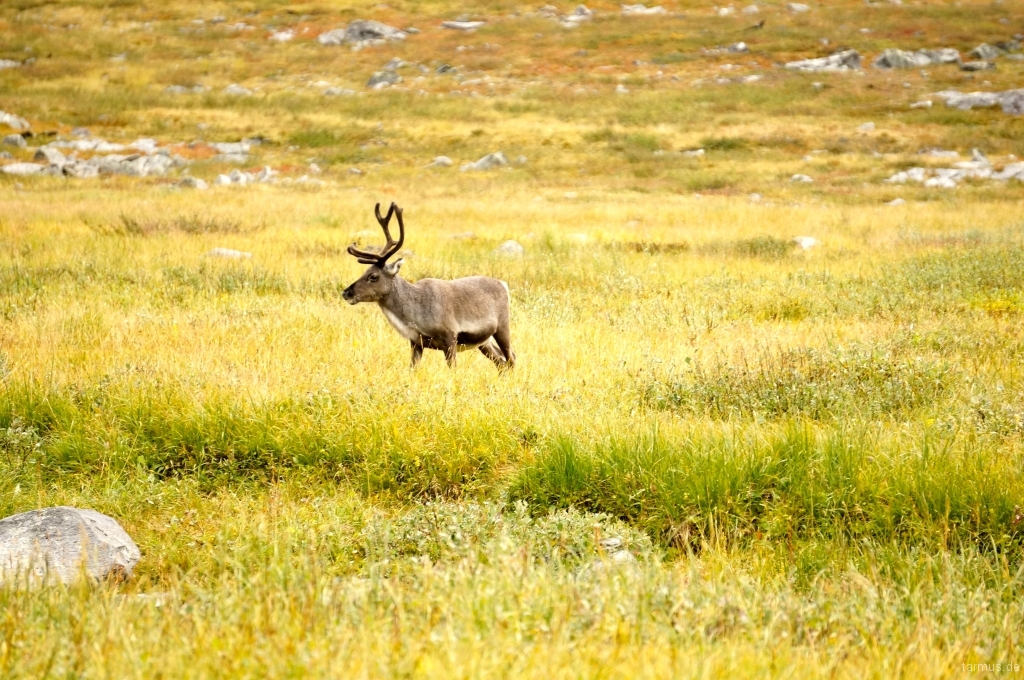
Lucky him for living here in this beautiful environment.
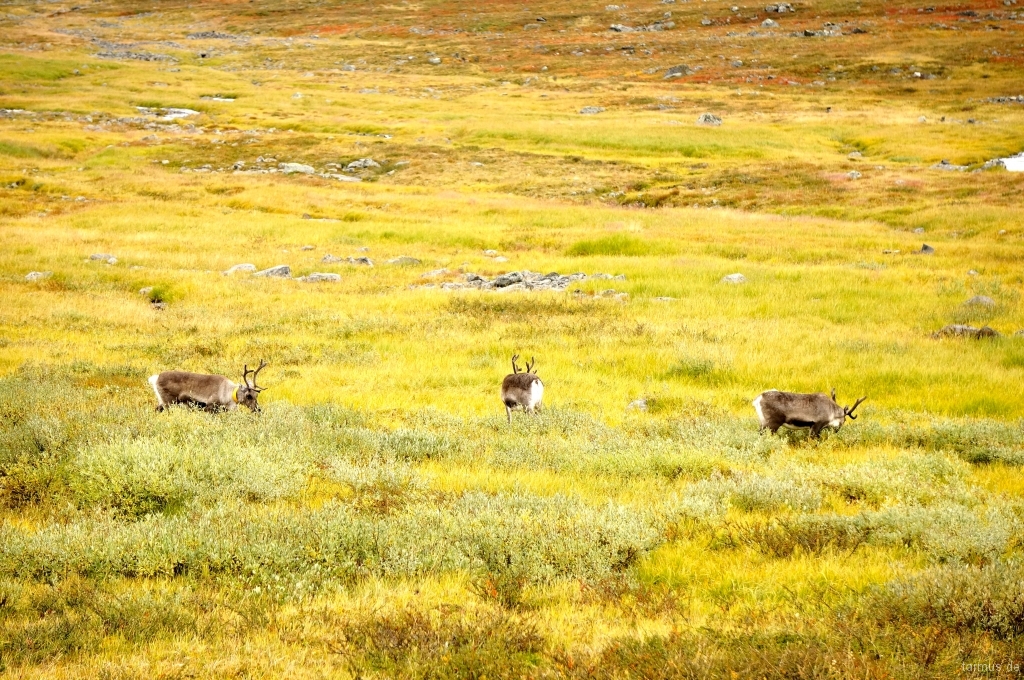
He had friends…
The river followed us from Tjäktapass all the way to Sälka and we often had to cross small water streams. The abundance of water feed not only the animals and the vegetation of Kungsleden, but also us hikers, glad not to have to carry litres and litres of water in our backpacks.
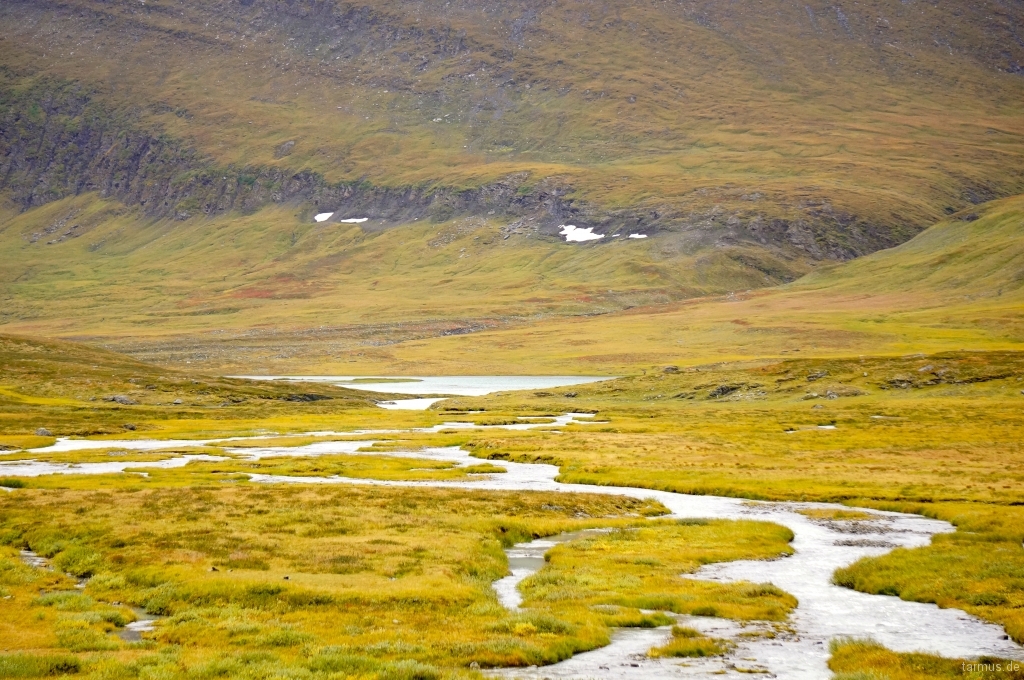
Streams met rain.
The Sälka cabins were situated at the most beautiful place, surrounded by mountain peaks that made the whole scenery more dramatic, then the valley and some lakes. We went inside the main hut and the nice warden invited us to have some lingonberry juice. The warmth from the fireplace dried our wet clothes a bit and after a short break we decided to continue a few kilometres more and set our tent up for the night.

Sälka huts
This post is a part of the following article: Hiking Kungsleden in Autumn